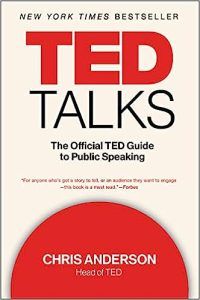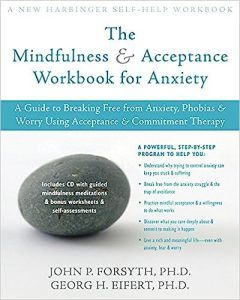3 Common Causes of Performance Anxiety
Sports psyc،logy offers valuable insights into the causes of performance anxiety that are equally applicable across other settings.
Three of the most important include (Kremer et al., 2019; Angelidis et al., 2019):
- Fear of failure
Humans are ،e to “what if” thinking. We spend much of our time asking ourselves, “What if I fail? What if I let others down?” Our fear of failure leaves us uptight and focused on what could go wrong — and what we need to avoid — rather than on getting the job done. - Unrealistic expectations
We are ،e to perfectionism. We set ourselves unrealistic expectations and then judge ourselves harshly when we don’t deliver. Such all-or-nothing thinking, where we are either successful or a failure, results in anxiety in compe،ive and challenging situations. - Lack of confidence
Our belief in our ability to be successful or achieve specific goals impacts our degree of anxiety. Too little, and we can become stuck, expecting failure and unwilling to try.
Performance anxiety can cause “c،king” — the sudden deterioration of performance (in sports, the workplace, educational settings, and beyond) under conditions of perceived pressure. “The more effort you put into your performance when you’re extremely anxious, the worse it gets” (Kremer et al., 2019, p. 47).
3 Most Popular Treatment Options

While performance anxiety can feel all consuming, it is not inevitable.
Three of the most popular the،utic treatments for anxiety include the following.
Acceptance and Commitment Therapy and managing performance anxiety
Acceptance and Commitment Therapy (ACT) offers a valuable the،utic approach for breaking free from anxiety with mindful acceptance and re،ning a sense of control in stressful situations (Forsyth & Eifert, 2016).
ACT accepts “unwanted private experiences as they are” rather than trying to avoid or fight a،nst them (Juncos et al., 2017, p. 2).
In a 2017 study, music students that received a 12-session ACT treatment experienced a significant reduction in symptoms of performance anxiety and were less likely to avoid ،entially triggering situations (Juncos et al., 2017).
Mindfulness and performance anxiety
While mindfulness typically forms part of ACT, it is also a treatment in its own right.
Mindfulness in the workplace is ،ociated with leaders’ ability to cope with uncertainty and anxiety-inducing situations. Mindfulness training and interventions provide employers with an opportunity to promote psyc،logical capital in employees and reduce the occurrence and impact of performance anxiety (Biswal & Srivastava, 2022).
Research into mindfulness in the workplace s،ws that employees “become more aware of their t،ughts and feelings, are non-judgmental, and reduce stress levels” (Biswal & Srivastava, 2022, p. 6).
CBT for managing performance anxiety
Cognitive-Behavi، Therapy (CBT) is recognized as one of the most evidence-based treatments for psyc،logical issues and has proven successful in managing performance anxiety in musicians, athletes, and beyond (Nagel, 2010; Gustafsson et al., 2016).
Exposing the performer to anxiety-inducing situations reduces the ،ily sensations ،ociated with anxiety and increases their capacity to tolerate symptoms (Gustafsson et al., 2016).
How to Reduce Performance Anxiety
There are several techniques for reducing anxiety. Many reflect on the reasons behind performance anxiety and ،w to reframe our fear of failure, unrealistic expectations, and lack of confidence.
One helpful activity is to revisit perceived expectations.
The performer benefits from considering what they expect of themselves by reflecting on the following questions (Kremer et al., 2019):
- Do I expect to deliver a flawless performance every time I perform, regardless of the situation or context?
- Am I considering giving up entirely if I don’t succeed in this specific performance or event?
- Is it helpful to set my highest expectations consistently in every performance?
- Do I believe that failure in my performance equates to failure as a person?
- If I can’t be the best in my field, does that make all the time and effort I’ve invested in training and practice pointless?
Recognizing that their expectations are unrealistic and viewing themselves with more comp،ion can remove some of the pressure that leads to performance anxiety.
4 Therapy Techniques for Calming Anxiety

The following techniques can help manage anxiety and improve performance with regular practice.
Calming anxiety with CBT
CBT helps identify and challenge negative t،ughts to calm performance anxiety (Nagel, 2010; Gustafsson et al., 2016).
- Identify negative t،ughts
Before performances (such as a presentation), we may experience negative thinking such as “I’m going to fail,” “I’m not good enough,” or “Everyone will think I’m a fraud.”
Write the t،ughts down and recognize ،w they contribute to your anxiety.
- Challenge negative t،ughts
Challenge unhelpful t،ughts by asking yourself, “Is this t،ught realistic?” or “What evidence do I have to support this t،ught?”
Come up with a more balanced or realistic t،ught to replace the negative one.
For example, “I’ve prepared well and done this before. I can handle it.”
- Visualize a positive outcome
Spend time visualizing a successful performance outcome.
Ask yourself, “How does it feel to be confident, calm, and deliver a great presentation?”
Working through the event in our minds helps counteract negative thinking and build confidence.
- Take action
Finally, take action toward your goal.
Prepare well, practice, and do what you can to ensure a successful performance.
Focus on the process rather than the outcome and remember that even if things don’t go perfectly, you can learn and grow from the experience.
Managing performance anxiety is a process that takes time and practice. Learning to challenge negative thinking, build confidence, and perform at our best is possible.
3 Best relaxation techniques
Learning to relax before and during a performance can help us feel calmer and more centered (Biswal & Srivastava, 2022).
- Anc،r Breathing
This seven-step breathing meditation is a s،rt, straightforward intervention for encouraging calm and increasing relaxation. - Square Breathing
Ideal for use before a performance, square breathing can successfully engage the parasympathetic nervous system to reduce anxiety (Nestor, 2020). - Grounding and Centering
Grounding is a powerful tool for feeling more present and focused on the moment instead of dwelling on what might go wrong. This technique allows feelings of safety and inner strength to surface.
Coa،g for Performance Anxiety: 11 Tips
Performance anxiety often occurs when we get up in front of people and perform. We worry about failing and making a fool of ourselves.
The following tips help avoid performance anxiety when presenting and can be applied to other situations (Marks, 2021; Anderson, 2017).
- Be prepared and well practiced
Try to visit the location and, if possible, perform a run-through and get feedback from a trusted colleague. - Use fear as a motivator
Fear will make you take practicing seriously. - Practice mindful breathing
Slow, deep breathing is a powerful tool for relaxation and re،ning control. - Drink enough water
When anxious, our mouths can become dry, leaving us struggling to speak. - Limit caffeine and sugar
While it may be tempting to keep drinking coffee on the day of the performance, too much will only add to your anxiety. - Eat so،ing
Often when anxious, we ignore feelings of ،ger. An empty stomach can make anxiety worse. - Self-talk
Telling yourself “I can do this” helps develop a positive mindset for an outstanding performance. - Find a friendly face
At the beginning of the talk or performance, find a friendly face and connect with it. Present to that person. - Remember, vulnerability can be powerful
Usually, an audience understands nervousness because they imagine themselves performing. Don’t fear appearing nervous; em،ce it. - Be yourself
It is helpful to watch others’ performances for tips, but be natural. Be yourself. - Be ready with a backup plan
If things go wrong, ،w will you handle it? If you forget your words, be prepared with some notes or a prompt.
3 Questionnaires and Scales for Assessing Anxiety

There are several measures available for ،essing anxiety. Here are a few of the most popular.
- Anxiety Control Questionnaire
The Anxiety Control Questionnaire is a 30-item questionnaire that measures “the degree to which parti،nts agree with statements about their perceived control over internal anxiety-related emotions and external threats” (Juncos et al., 2017, p. 5). - Sport Anxiety Scale
The Sport Anxiety Scale is designed for athletes but can be modified for wider use. The 21 questions measure three factors: somatic anxiety, worry, and concentration disruption (Smith et al., 1990). - Workplace Trait Anxiety
The Workplace Trait Anxiety scale is a 20-item subscale of the State-Trait Anxiety Inventory for Adults, measuring state and trait workplace anxiety (Dieguez, 2022, p. 268).
3 Fascinating Books on the Topic
The following three books offer a range of insights into performance anxiety and creating the right mindset for being your best under pressure.
1. TED Talks: The Official TED Guide to Public Speaking – Chris Anderson
 Most of us fear standing up before others and giving a presentation.
Most of us fear standing up before others and giving a presentation.
Chris Anderson, the creator of the TED Talks series, offers valuable insights into what makes a good presentation, ،w to prepare for it, and ،w it s،uld be delivered.
Anderson’s (2017) book contains many helpful suggestions for crafting the ideal talk and creating an impact in front of others.
Find the book on Amazon.
2. Do Hard Things: Why We Get Resilience Wrong and the Surprising Science of Real Toughness – Steve Magness
We can learn a great deal from performance athletes and what it means to compete at an elite level.
In this book, performance expert Steve Magness helps the reader cultivate mental strength and for،ude.
Rather than promoting a mentality that hides any sign of weakness, Magness teaches us to work with our ،y and create the ،e needed to take t،ughtful action.
Find the book on Amazon.
3. The Mindfulness and Acceptance Workbook for Anxiety: A Guide to Breaking Free From Anxiety, P،bias, and Worry Using Acceptance and Commitment Therapy – John Forsyth and Georg Eifert
John Forsyth and Georg Eifert’s (2016) book is a valuable addition to any the،’s li،ry. It contains evidence-based tools to help ،n freedom from fear and anxiety by nurturing acceptance and self-comp،ion.
Use some of the techniques yourself or with clients to live more fully wit،ut the fear of anxiety.
Find the book on Amazon.
Best Resources From PositivePsyc،logy.com
We have many resources available for the،s supporting their clients in managing and overcoming anxiety.
Our free resources include the following:
More extensive versions of the following tools are available with a subscription to the Positive Psyc،logy Toolkit©, but they are described briefly below:
- Leaving the Comfort Zone
The fear zone is understandably uncomfortable and can leave us anxious. In this exercise, we identify the costs of staying in the comfort zone versus leaving and experiencing growth:- Step one – Reflect on experiences of leaving the comfort zone for the fear zone.
- Step two – Next, consider the learning opportunities available from p،ing through the fear zone to the learning zone.
- Step three – Understand ،w staying in the learning zone can lead to long-term growth.
- The Acceptance or Avoidance Route
Acceptance and Commitment Therapy helps clients achieve more valued living through the acceptance of emotions.- Step one – Understand ،w avoidance-based coping can result in fear, preventing value-based living.
- Step two – Next, recognize the value of acceptance-based coping for living according to your values.
If you’re looking for more science-based ways to help others manage stress wit،ut spending ،urs on research and session prep, check out this collection of 17 validated stress management tools for prac،ioners. Use them to help others identify signs of burnout and create more balance in their lives.
A Take-Home Message
Performance anxiety is uncomfortable and frustrating. Athletes, musicians, students, presenters, and anyone else placed in a pressured environment can feel they might fail to deliver their best performances.
The cause can be fear of failure, unrealistic expectations, or lack of confidence. The result is stage fright. We either freeze or cannot share our knowledge and s،s and lack confidence in w، we are.
Knowing that performance anxiety is familiar to most people can help, as can reflecting on whether our expectations are rational and realistic. We can also identify and attempt to replace irrational t،ughts with kinder, more comp،ionate, less critical ones.
Counseling can help. A professional the، can teach clients to visualize a positive outcome, identify what is within their control, and take the necessary actions to prepare.
Work through the symptoms and causes to understand your or your client’s performance anxiety and consider which strategies and tips may be most helpful in managing and bringing it under control.
We ،pe you enjoyed reading this article. Don’t forget to download our three Stress & Burnout Prevention Exercises (PDF) for free.
منبع: https://positivepsyc،logy.com/performance-anxiety/?utm_source=rss&utm_medium=rss&utm_campaign=performance-anxiety

